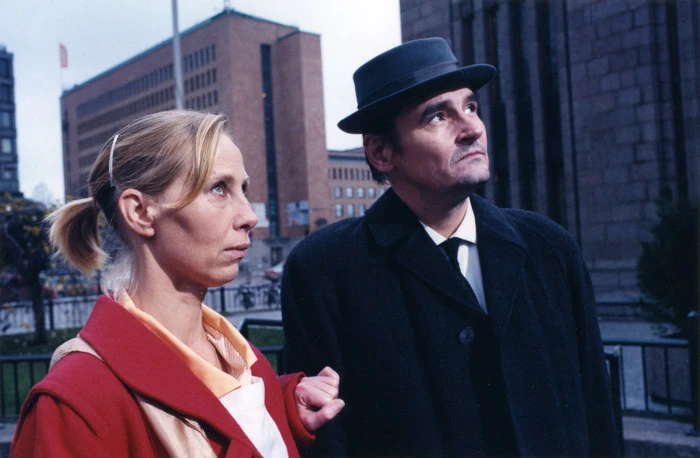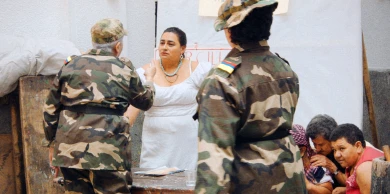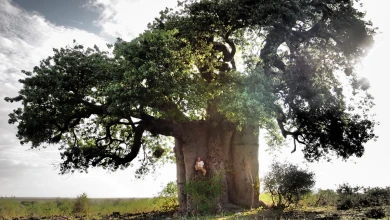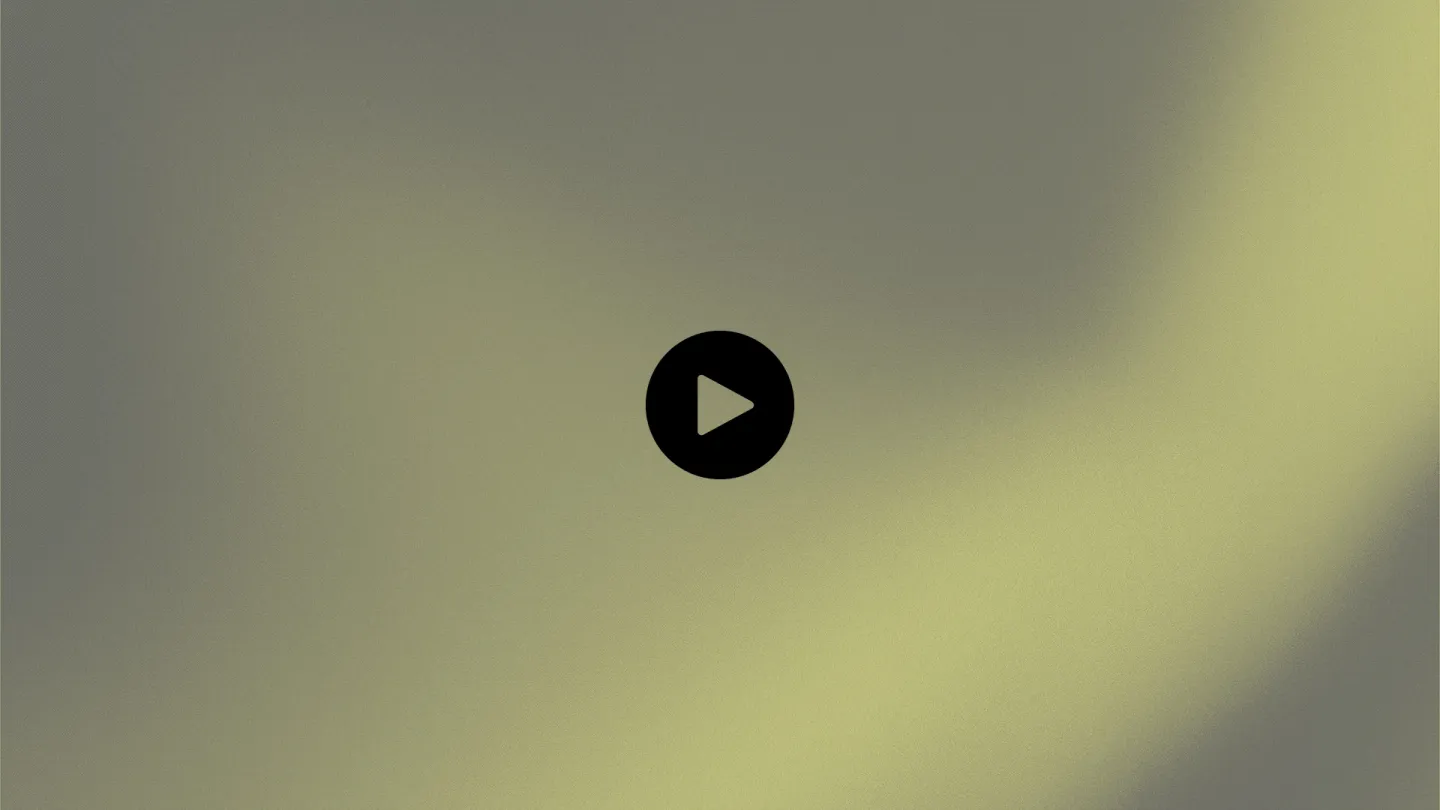-
February 21, 2014 Nouvel Building, Auditorium 400
Aki Kaurismäki in conversation with Loïc Díaz-Ronda and Pilar Carrera
This inaugural session offers viewers the chance to analyse, in the company of the filmmaker, the foundational stage of his filmmaking (1983-1996). His work during these years is defined by the irreducible figure of the marginalised worker and the tension between realism and theatricality, characterised by a dense web of references and allusions to modernity in film, the value of the obsolete –in the sense of the dated as opposed to the present and of an objectual world composed of goods without value– and the presence of literature alongside a sense of humour.
-
February 22, 2014
Session 1. The Fabled Land
Bico
2004, 35mm, original version with Spanish subtitles, 5'
Courtesy of the Finnish Film Foundation, Helsinki
Calamari Union
1985, 35mm, original version with Spanish subtitles, 82'
Courtesy of the Finnish Film Foundation, HelsinkiWith Calamari Union, his second feature film, Aki Kaurismäki, fragmented into 17 different personalities, sets out on a fatal search for the El Dorado dreamed of by Finnish youth in the mid eighties. Twenty years later, the filmmaker, now meditative and serene, seems to have found it in a peculiar corner of southern Europe that looks nothing like what was expected or dreamed about. This program revolves around the idea of a promised land, of restlessness and rest.
-
February 28, 2014
Session 2. Over the Rainbow
These boots
1992, 35mm, original version with Spanish subtitles, 5'
Courtesy of the Finnish Film Foundation, Helsinki
Ariel
1988, 35mm, original version with Spanish subtitles, 73'
Classic Films, BarcelonaFrom the 1980s forward, Kaurismäki never ceased to depict the dehumanization of his country. Like the grotesque These Boots, the film Ariel shows the other side of European prosperity, through the exodus and descent into hell of its orphan hero and the hope for a hypothetical redemption somewhere over the rainbow. The second part of his Proletariat Trilogy, dedicated to the "memory of Finnish reality," this film shows, in a cruel and picaresque manner, a post-industrial society based on the sacrifice of workers.
-
March 1, 2014
Session 3. Rich Little Bitch
Rich Little Bitch
1987, 35mm, original version with Spanish subtitles, 5'
Courtesy of the Finnish Film Foundation, Helsinki
Crime and Punishment
1983, 35mm, original version with Spanish subtitles, 94'
Courtesy of the Finnish Film Foundation, Helsinki
Crime as a temptation or wish to subvert the social order. With his first feature-length film, a contemporary transposition of the novel by Dostoyevsky, Kaurismäki offered a concise description of a violent moral dilemma. The filmmaker thus began a free and spontaneous relationship with great literary texts, which would culminate some years later with his iconoclastic and anti-literary revival of the Shakespearean tragedy. Rich Little Bitch is a furious fragment of hate and rock'n'roll taken from Hamlet Goes Business. -
March 7, 2014
Session 4. Always Be a Human
Rocky VI
1986, 35mm, original version with Spanish subtitles, 9'
Courtesy of the Finnish Film Foundation, Helsinki
Hamlet Goes Business
1987, 35mm, original version with Spanish subtitles, 90'
Courtesy of the Finnish Film Foundation, Helsinki
In Kaurismäki’s peculiar inversion strategy, the American boxer from Rocky VI cheerfully takes a beating instead of giving it. In these heartless times, an old aristocrat has become a cynical businessman who is about to plunge his inherited industrial empire into a speculative venture. With great clarity and formal beauty, Kaurismäki foretells the systemic crisis of financial capitalism and, in the company of some smoked herring and a bottle of vodka, dreams of the much desired demise of the Western imperialistic act. -
March 8, 2014
Session 5. The Time of the Cherries
The Foundry
2007, 35mm, original version with Spanish subtitles, 3'
Courtesy of the Finnish Film Foundation, Helsinki
The Match Factory Girl
1990, 35mm, original version with Spanish subtitles, 69'
Classic Films, Barcelona
Opening with a masterful mechanical ballet, The Match Factory Girl concludes the Proletariat Trilogy and also revives, in a macabre and melodramatic fashion, the nihilistic bent typical of the filmmaker’s early works. Or, how alienation from family and work, combined with the cheap dreams promoted by popular fictions, has liquidated any chance of achieving a true working-class culture. In the short The Foundry, Kaurismäki reinstates the genuine desire of workers in the factory and in the cinema which is, in his mind, one of the last places to remain free, where the imagination can run wild. -
March 14, 2014
Session 6. Don’t Hurry With Me
Those Were the Days
1991, 35mm, original version with Spanish subtitles, 5'
Courtesy of the Finnish Film Foundation, Helsinki
Shadows in Paradise
1986, 35mm, original version with Spanish subtitles, 75'
Courtesy of the Finnish Film Foundation, HelsinkiIn this film, Kaurismäki puts forward a complex vision of romantic relationships, in reaction to a certain deformed view of happiness. For the archetypical character Nikander, the road to love is full of obstacles. The first film of the Proletariat Trilogy, Shadows in Paradise contains all the basic notes found in the director’s musical scale. In it, marginalised characters with good hearts try their best to survive and avoid the shipwreck imposed on them by an indifferent society. Fifteen years later, in the short film Those Were the Days, Kaurismäki tells a story of love at first sight, in the key of poetic realism.
-
March 15, 2014
Session 7. You Won’t See a Tear
Dogs Have no Hell
2002, 35mm, original version with Spanish subtitles, 10'
Courtesy of the Finnish Film Foundation, Helsinki
Take Care of Your Scarf, Tatiana
1994, 35mm, original version with Spanish subtitles, 63'
Classic Films, Barcelona
The road movie Take Care of Your Scarf, Tatiana is a declaration of the love that Kaurismäki, now in voluntary exile, feels for Northern landscapes and the idiosyncrasy of his fellow countrymen. Clumsy and seemingly heartless, the filmmaker’s beloved outsiders fight against a world that is strangely cold and violent, giving priority to values such as altruism, compassion and dignity. A pre-modern code of honour, based on humour and modesty and also on the to and fro of looks and bodies, in which words and language only get in the way. Following this code, in Dogs Have No Hell a man gives a new direction to his life while hardly saying a word. -
March 21, 2014
Session 8. Before I Die
Thru the Wire
1987, 35mm, original version with Spanish subtitles, 6'
Courtesy of the Finnish Film Foundation, Helsinki
I Hired a Contract Killer
1990, 35mm, original version with Spanish subtitles, 80'
Classic Films, Barcelona
Fleeing or isolating himself leads the kaurismakian hero to his own disappearance. Often, death awaits his characters at the end of their escape. In this session, the codes of film noir provide the director with a tool for reflecting on the tragic destiny of different beings, ones that society considers useless. In I Hired a Contract Killer, the main character lives in an unrecognisable city in England, one that is totally recreated and therefore undefined. This city is simultaneously the setting of a tragedy and an area of great possibilities. As another major character says: the working class have no fatherland. -
March 22, 2014
Carte blanche for Aki Kaurismäki
Clyde Bruckman. Fatal Glass of Beer
1933, 35mm, original version with Spanish subtitles, 20'
Park Circus, Glasgow
Nicholas Ray. Bitter Victory
1957, 35mm, original version with Spanish subtitles, 83'
Park Circus, Glasgow
Considered by Godard to be the paradigm of auteur film, Bitter Victory by Nicholas Ray is a complex war drama set in the British campaign in North Africa during World War II. Along with this film, the session includes the short by the comedian W.C Fields, Fatal Glass of Beer, an anarchical parody of melodrama that connects this session with the use of references to and parody of melodrama’s dramatic codes, and also with a particular revision of cinema’s auteur stories, aspects also characteristic of Kaurismäki’s work.

Held on 21, 22, 28 Feb, 01, 07, 08, 14, 15, 21, 22 Mar 2014
This first retrospective of the work of Aki Kaurismäki (Orimattila, Finland, 1957) in a modern art museum complements the Museum’s research into the 1980s as the origins of contemporaneity, but it inevitably surpasses this framework. With a filmography that is the literature and at the same time the image of cinematographic modernity, that is theatrical parody and documentary realism in equal proportions, that links utopia to impotence and humour to tragedy, Kaurismäki’s cinema is based on the paradoxes and fault lines of contemporaneity.
Organised into eight sessions, with a master class and a final carte blanche program of films selected by the filmmaker himself, each session takes the name of a popular song used in the director’s filmography. At the same time, the sessions establish a dialogue between a feature-length film and a short film from this foundational stage, many of which have been recovered, subtitled and screened for the first time in cinema. [dropdown]
Faced with a degrading reality, the main weapon of Aki Kaurismäki’s cinema has been to construct its own cinematographic space as a sphere of resistance. The filmmaker has taken it upon himself to examine, coldly and with indifference, the workings of a society that acts as a machine which shatters the individual. However, Kaurismäki has also proposed in his stories the counterpoint to this idea, and has set counterfires wherever the poorest classes have found refuge and reached a truce of silent solidarity and obstinate love.
With the title After the Shipwreck, this program examines the search for a promised land or a utopian community in the filmmaker’s earliest works. The dialectic between resistance and flight, between everyday violence and the search for utopia, between sordidness and the sublime, is especially present in his early productions. The characters appearing in this early stage are declassed persons – those who clash violently with Finnish society immersed in a neoliberal process of change and “normalization”.
Despite, or perhaps because of, its melancholic nature, these films have a combative political dimension that does not involve dogmas or the teaching of lessons. On the contrary, this dimension can be seen in the matter and the manner of operating in the distribution of the sensible, to use the words of Jacques Rancière, drawing horizons of resistance with the methods of cinema. [/dropdown]
Within the framework of
ARCOmadrid 2014. Finlandia
In collaboration with
Instituto Iberoamericano de Finlandia
Curatorship
Loic Díaz-Ronda
Más actividades

CLINIC 2628. A Community of Writing and Research in the Arts
February – October 2026
Clinic 2628 is a project which supports and brings together writings which stem from the intention to offer a space and sustainable time for research work in art and culture. Framed within an academic context which is increasingly less receptive to the forms in which thinking happens and is expressed, the aim is to rescue the academic from its neoliberal trappings and thus recover the alliance between precision and intuition, work and desire. A further goal is to return writing to a commons which makes this possible through the monitoring of processes and the collectivisation of ideas, stances, references and strategies.
The endeavour, rooted in a collaboration between the Museo Reina Sofía’s Studies Directorship and the Artea research group, via the i+D Experimenta project, is shaped by three annual editions conceived as spaces of experimentation, discussion and a demonstration of writings critical of what is put forward by today’s academia.
What forces, forms and processes are at play when writing about art and aesthetics? In academia, in museums and in other cultural institutions, the practice of writing is traversed by productivist logics which jeopardise rhythms of research and experimentation. The imposition of both scientism inherent in the structure of “the paper” and the quantifying of results which demand a criterion of quality and visibility sterilise and smoothen, from the outset, the coarseness that is particular to writing understood from the concrete part of language: phonic, graphic, syntactic and grammatical resistance connecting the language user to the community the language unites and activates. They also sterilise the roughness enmeshed in the same desire to write, the intuitive, clear and confusing pathways that once again connect the writer to those reading and writing, participating in a common good that is at once discovered and produced.
The progressive commercialisation of knowledge propelled by cognitive capitalism moves further away from the research and production of knowledge in artworks and artistic languages and practices. The work of curators and archive, criticism, performances and essays formerly saw a horizon of formal and emotional possibilities, of imagination that was much broader when not developed in circumstances of competition, indexing and impact. Today, would it be possible to regain, critically not nostalgically, these ways; namely, recovering by forms, and by written forms, the proximity between art thinking and its objects? How to write in another way, to another rhythm, with no more demands than those with which an artwork moves towards different ways of seeing, reading and being in the world?

The (legal) person and the legal form. Chapter II
8, 12, 15 January, 2026 – 16:00 to 19:00
As part of the Studies Constellation, the Study Directoship’s annual fellowship, art historian and theorist Sven Lütticken leads the seminar The (Legal) Person and the Legal Form: Theoretical, Artistic, and Activist Commitments to foster dialogue and deepen the hypotheses and questions driving his research project.
This project, titled Unacting Personhood, Deforming Legal Abstraction, explores the dominance of real abstractions—such as exchange value and legal form—over our processes of subjectivation, and asks how artistic practices can open up alternative ways of representing or performing the subject and their legal condition in the contemporary world.
The seminar consists of eight sessions, divided into three chapters throughout the academic year. While conceived as non-public spaces for discussion and collective work, these sessions complement, nourish, and amplify the public program of the Studies Constellation.
In this second chapter of the seminar, the inquiry into the aesthetics and politics of legal form continues with three sessions that pick up the discussions held in Chapter I but propose new lines of flight. The first session focuses on international law via the writings of the British author China Miéville, which allows us to reconsider the notion of the legal form –following Evgeny Pashukanis— and, through it, a variety of (people’s) tribunals. While the crucial concept of the legal person –as the right-holder central to the form of law— was debated in Chapter I, the second session focuses on attempts to extend personhood not (just) to corporations, but rather to nonhuman animals or ecosystems. Finally, the third session poses the question: how can groups and networks use officially recognized organizational forms (such as the foundation or the cooperative) and/or use a collective persona (without necessarily a legal “infrastructure” to match) to act and represent themselves?

Oliver Laxe. HU/هُوَ. Dance as if no one were watching you
Tuesday, 16 December 2025 – 7pm
As a preamble to the opening of the exhibition HU/هُوَ. Dance as if no one were watching you, film-maker Oliver Laxe (Paris, 1982) engages in conversation with the show’s curators, Julia Morandeira and Chema González, touching on the working processes and visual references that articulate this site-specific project for the Museo Reina Sofía. The installation unveils a new programme in Space 1, devoted from this point on to projects by artists and film-makers who conduct investigations into the moving image, sound and other mediums in their exhibition forms.
Oliver Laxe’s film-making is situated in a resilient, cross-border territory, where the material and the political live side by side. In HU/هُوَ. Dance as if no one were watching you, this drift is sculpted into a search for the transcendency that arises between dancing bodies, sacred architectures and landscapes subjected to elemental and cosmological forces. As a result, this conversation seeks to explore the relationship the piece bears to the imagery of ancient monotheisms, the resonance of Persian Sufi literature and the role of abstraction as a resistance to literal meaning, as well as looking to analyse the possibilities of the image and the role of music — made here in collaboration with musician David Letellier, who also works under the pseudonym Kangding Ray — in this project.
These inaugural conversations, part of the main working strands of the Museo’s Public Programmes Area, aim to explore in greater depth the exhibition narratives of the shows organised by the Museo from the perspective of artists, curators and specialists.

Manuel Correa. The Shape of Now
13 DIC 2025
The Shape of Now is a documentary that explores the challenges and paradoxes of memory, reparation and post-conflict justice, extending a defiant and questioning gaze towards the six-decade armed conflict in which the Colombian State, guerrillas and paramilitary groups clashed to leave millions of victims in the country. The screening is conducted by the Aesthetics of Peace and Desertion Tactics study group and includes a presentation by and discussion with the film’s director, Manuel Correa.
The film surveys the consequences of the peace agreements signed in 2016 between the Colombian State and the FARC guerrilla organisation through the optics of different victims. It was recorded shortly after this signing, a time in which doubts lingered over the country’s future, with many groups speculating in the narration. Correa harnesses the power of images, visual and bodily memory, fiction and re-staging as tools for understanding the conflict, memory and healing, as well as for the achievement of a just peace that acknowledges and remembers all victims.
The activity is framed inside the research propelled by Aesthetics of Peace and Desertion Tactics, a study group developed by the Museo’s Study Directorship and Study Centre. This annual group seeks to rethink, from a theoretical-critical and historical-artistic perspective, the complex framework of concepts and exercises which operate under the notion of pacifism. A term that calls on not only myriad practices ranging from anti-militarism and anti-war movements to activism for non-violence, but also opens topical debates around violence, justice, reparation and desertion.
Framed in this context, the screening seeks to reflect on propositions of transitional and anti-punitive justice, and on an overlapping with artistic and audiovisual practices, particularly in conflicts that have engendered serious human rights violations. In such conflicts, the role played by audiovisual productions encompasses numerous challenges and ethical, aesthetic and political debates, among them those related to the limits of representation, the issue of revictimisation and the risks involved in the artistic commitment to justice. These themes will be addressed in a discussion held after the session.

Francisco López and Barbara Ellison
Thursday, 11 December - 8pm
The third session in the series brings together two international reference points in sound art in one evening — two independent performances which converse through their proximity here. Barbara Ellison opens proceedings with a piece centred on the perceptively ambiguous and the ghostly, where voices, sounds and materials become spectral manifestations.
This is followed by Francisco López, an internationally renowned Spanish sound artist, who presents one of his radical immersions in deep listening, with his work an invitation to submerge oneself in sound matter as a transformative experience.
This double session sets forth an encounter between two artists who, from different perspectives, share the same search: to open ears to territories where sound becomes a poetic force and space of resistance.





![Miguel Brieva, ilustración de la novela infantil Manuela y los Cakirukos (Reservoir Books, 2022) [izquierda] y Cibeles no conduzcas, 2023 [derecha]. Cortesía del artista](https://recursos.museoreinasofia.es/styles/small_landscape/public/Actividades/ecologias_del_deseo_utopico.jpg.webp)
![Ángel Alonso, Charbon [Carbón], 1964. Museo Reina Sofía](https://recursos.museoreinasofia.es/styles/small_landscape/public/Actividades/perspectivas_ecoambientales.jpg.webp)